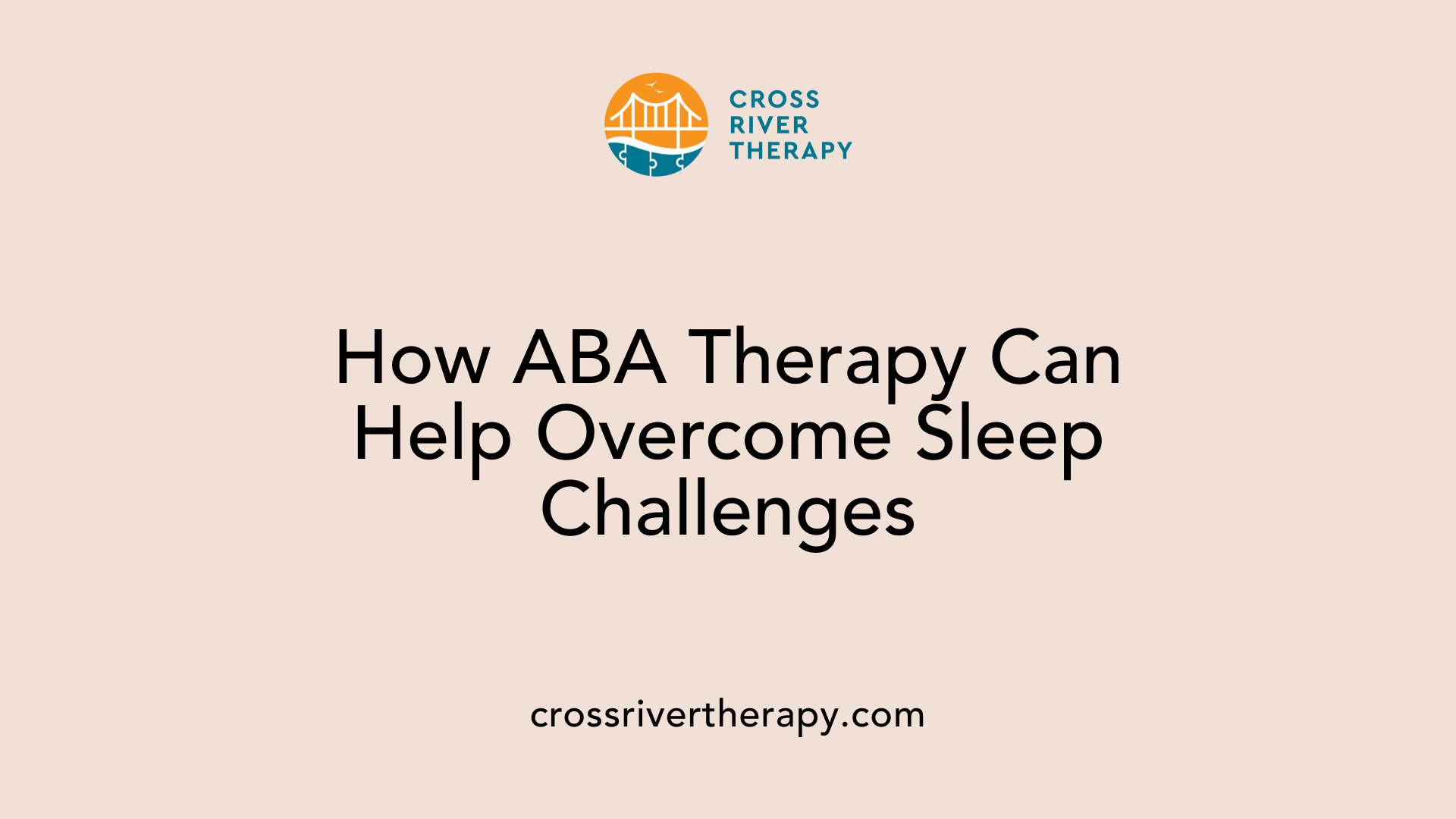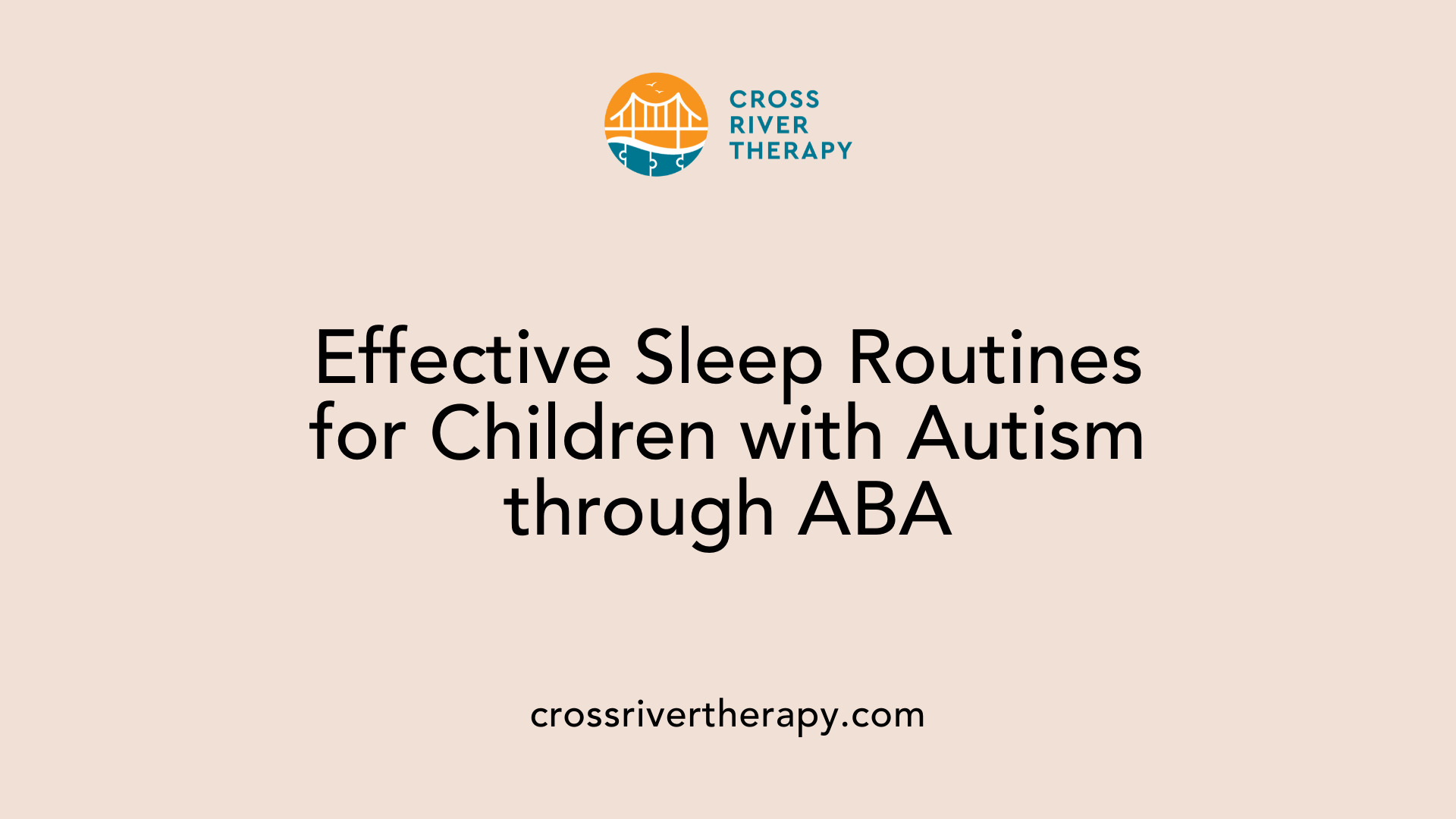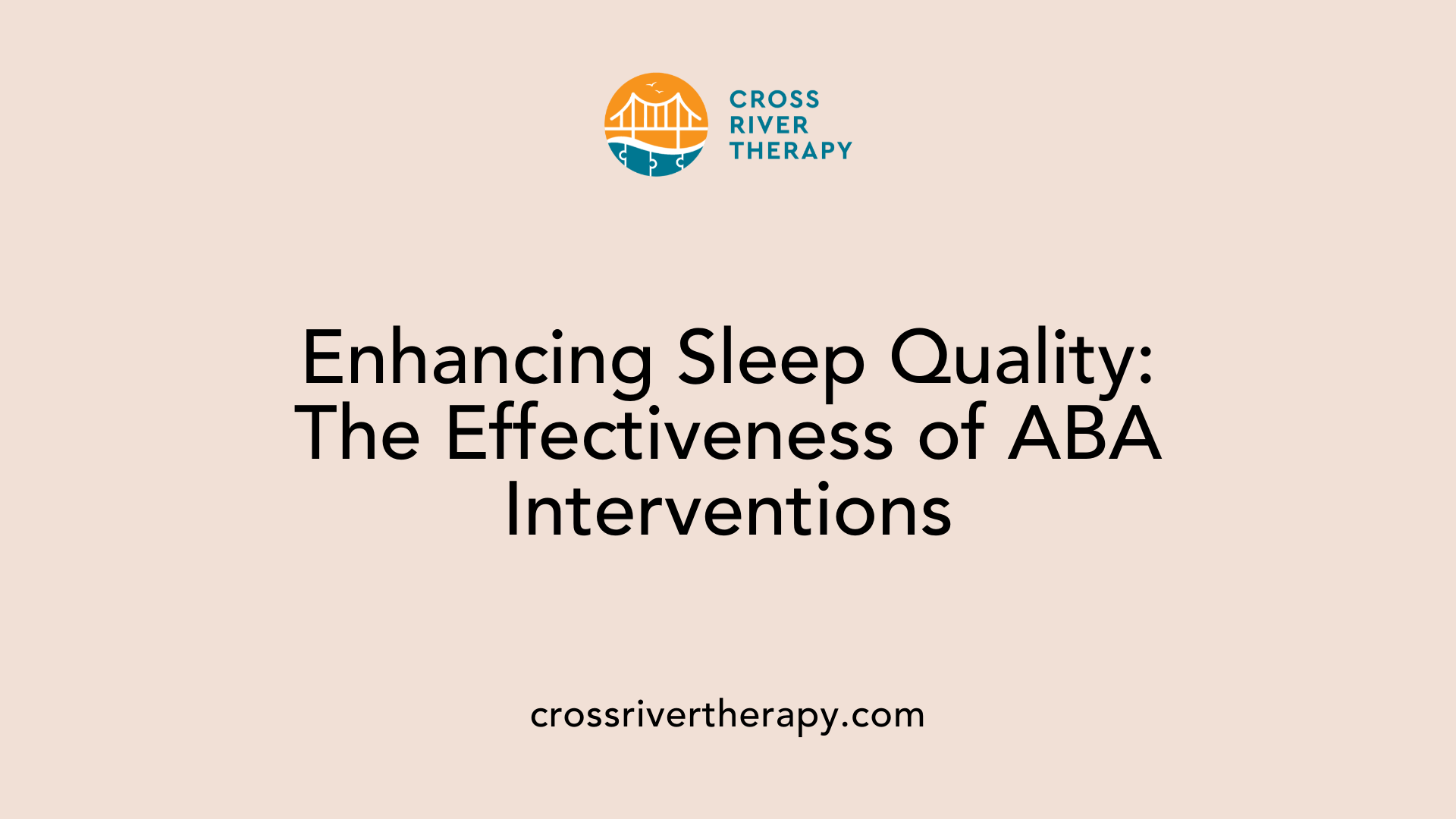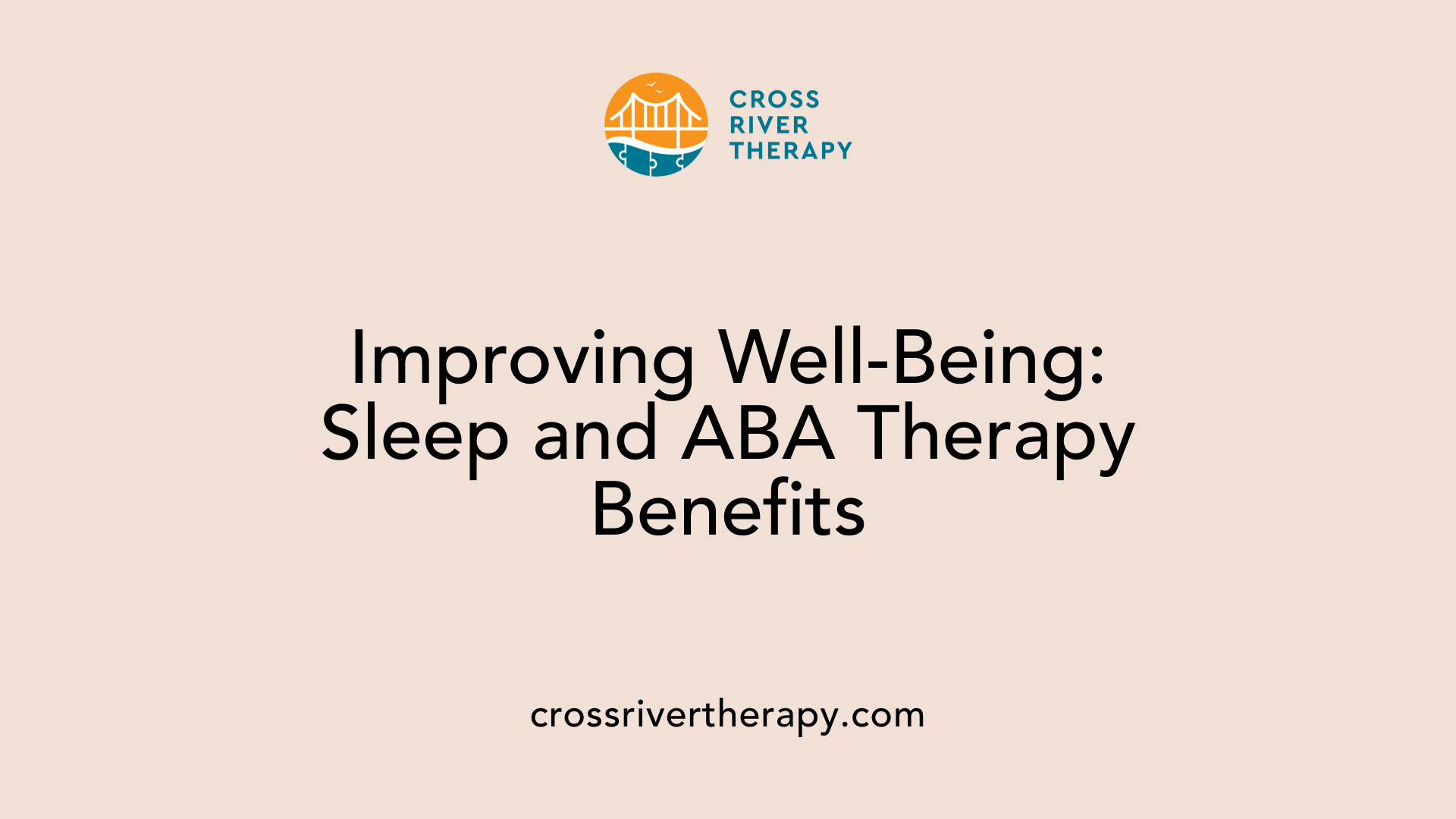How ABA Therapy Helps with Sleep Issues in Children with Autism
Unlocking Restful Sleep: ABA Therapy's Role in Managing Autism-related Sleep Challenges
Understanding Sleep Challenges in Children with Autism
Sleep problems are remarkably common in children with autism spectrum disorder (ASD), affecting up to 80% of this population. These issues are significantly more prevalent compared to general childhood populations. Children with autism often face a variety of sleep disturbances, such as difficulty falling asleep, frequent awakenings, and daytime drowsiness. The causes of these sleep difficulties are multifaceted and often linked to sensory sensitivities, anxiety, low melatonin production, and other co-occurring conditions. Such disruptions not only affect sleep quality but can also exacerbate autism symptoms, leading to increased behavioral challenges and impacting the overall family dynamic.
Exploring the Prevalence and Causes of Sleep Issues in Autism

What is the prevalence of sleep issues in children with autism, and what are the potential causes?
Sleep issues are alarmingly common among children with autism spectrum disorder (ASD). Research suggests that between 40% to 80% of these children experience sleep disturbances, a rate significantly higher than the 10% to 30% observed in typically developing children. Common sleep problems include:
- Bedtime resistance: Difficulty settling down for the night.
- Sleep anxiety: Fear or anxiety surrounding sleep.
- Sleep onset delay: Extended time taken to fall asleep.
- Daytime sleepiness: Feeling overly tired during the day.
Several factors contribute to these sleep challenges:
| Factor | Description | Impact on Sleep |
|---|---|---|
| Sensory sensitivities | Heightened reactions to sensory input like noise or light. | Discomfort may prevent relaxation crucial for sleep. |
| Anxiety | Common mental health issue in children with ASD. | Can lead to difficulties in winding down at night. |
| Co-occurring conditions | Conditions such as ADHD or sleep apnea are prevalent. | May further complicate sleep management strategies. |
| Melatonin dysregulation | Impaired melatonin production can disrupt circadian rhythms. | Leads to challenges in falling asleep at appropriate times. |
The interplay of these factors can exacerbate sleep problems, worsening autism symptoms and creating additional challenges for families. Effective management is often difficult and may require a combination of behavioral interventions and pharmacological treatments, as traditional sleep hygiene techniques do not always yield the desired results.
By understanding these factors, caregivers and clinicians can begin to develop more effective strategies to improve sleep for children with autism.
How ABA Therapy Addresses Sleep Challenges

How does ABA therapy address sleep challenges in children with autism?
ABA therapy is a valuable approach for tackling sleep challenges in children with autism. By employing individualized interventions, therapists focus on modifying sleep-related behaviors to support better sleep outcomes. Given that up to 80% of children with autism spectrum disorder (ASD) are affected by sleep difficulties, addressing these problems is crucial for enhancing their quality of life.
Key components of ABA strategies include:
- Establishing consistent bedtime routines: This involves creating a sequence of calming activities that prepare a child for sleep, helping to signal that it’s time to wind down.
- Creating conducive sleep environments: ABA therapists often recommend modifications like blackout curtains and white noise machines to reduce sensory disruptions, ensuring a comfortable bedroom atmosphere.
- Teaching relaxation techniques: These can include deep breathing exercises or guided imagery to help manage anxieties that may disrupt sleep.
Additionally, behavioral parent training programs have proven effective in enhancing these sleep interventions. Parents learn strategies such as:
- Offering positive reinforcement when children follow sleep routines.
- Encouraging the development of independent sleep skills, which promotes self-soothing.
These strategies ultimately lead to improved daytime functioning, better behavioral health, and an enhanced overall quality of life for children with autism.
Establishing Effective Sleep Routines through ABA Therapy

What are some effective sleep routines and behavioral strategies related to ABA therapy for children with autism?
Effective sleep routines for children with autism can greatly benefit from the principles of Applied Behavior Analysis (ABA). Here are some strategies that can help establish better sleep:
Consistent Bedtime Routines: Establishing a fixed bedtime routine helps signal to children that it’s time to wind down. This predictability can ease anxiety and promote relaxation. Examples of activities to include are brushing teeth, a warm bath, and quiet reading.
Use of Visual Schedules: Many children with autism thrive on routines and visual cues. A visual schedule for their nightly tasks can help them understand what comes next, reducing confusion and making the transition to sleep smoother.
Calming Techniques: Incorporating gentle calming activities, like reading a story or using a soft touch massage, can enhance relaxation. These techniques can prepare the child mentally and physically for sleep.
Environmental Modifications: Creating a comfort-focused sleep environment is essential. This may involve using blackout curtains for light control, white noise machines to reduce noise disruptions, and ensuring the room temperature is comfortable.
Behavioral Reinforcement: Positive reinforcement can motivate children to engage in healthy sleep behaviors. Rewarding them for following their bedtime routines or staying in bed can encourage compliance and reduce resistance at bedtime.
Sensory Regulation Techniques: Adapting the sleep experience to accommodate sensory needs—such as using weighted blankets or deep pressure—can facilitate a more restful environment.
By implementing these methods consistently, children with autism can experience enhanced sleep quality and overall stability.
Ongoing assessment of sleep behaviors is crucial, allowing caregivers and therapists to fine-tune routines and strategies based on the child's evolving needs.
The Effectiveness of Behavioral Interventions on Sleep Improvements

How does ABA therapy relate to sleep improvements, and how effective are the behavioral interventions?
ABA therapy has gained recognition for its structured approach to addressing sleep disturbances among children with autism. Function-based behavioral interventions specifically target sleep issues by identifying the underlying reasons for sleep difficulties and implementing targeted strategies.
These interventions often involve the creation of personalized sleep plans that focus on modifying bedtime behaviors. Parents are educated on the importance of establishing consistent sleep routines and are guided in implementing strategies to reduce night wakings and enhance sleep onset.
Research shows that these behavioral changes can significantly reduce sleep problems. In many cases, parents report increased satisfaction and note improvements in their child's sleep patterns, which have lasting benefits. For instance, studies reveal that ABA therapy reduces unwanted behaviors like co-sleeping and nighttime disturbances, leading to better overall sleep quality.
Meta-analyses confirm that behavioral sleep interventions are effective, with consistent evidence of improvements in sleep latency and overall sleep duration. Furthermore, both children and parents experience enhanced sleep quality, highlighting the dual benefits of these interventions.
In summary, ABA therapy stands out as a valuable first-line strategy for tackling sleep disturbances in children with autism, offering substantial positive impacts on nighttime routines and parental well-being.
ABA Therapy's Treatment Strategies for Sleep Disorders
What are some treatment strategies within ABA therapy that help manage sleep disorders in children with autism?
Applied Behavior Analysis (ABA) therapy utilizes several treatment strategies to address sleep disorders in children with autism. One of the primary approaches is the establishment of consistent bedtime routines. This includes predictable cues designed to transition the child smoothly from active to calming activities, signaling that it's time for sleep.
Behavior modification techniques, such as positive reinforcement, play a crucial role in these strategies. For example, parents can reward their children for staying in bed or following their bedtime routines as a way to encourage healthy sleep habits. Another effective technique is bedtime fading, gradually shifting the time children go to bed to align better with their natural sleep patterns, thus reducing sleep onset delay.
Additionally, educating families on sleep hygiene is vital. This encompasses creating a sensory-friendly sleeping environment, optimizing factors like lighting and temperature, and ensuring regular daytime habits, including ample exercise and limited screen time, all aimed at enhancing overall sleep quality.
Monitoring sleep patterns with sleep diaries enables caregivers to identify specific sleep issues and track progress, informing necessary changes in intervention strategies. In some cases, consulting healthcare professionals about the potential use of melatonin supplements can provide further assistance in managing sleep-related challenges.
Role of parental involvement
Parental involvement is a foundational element in the successful implementation of ABA strategies for sleep issues. Engaged parents can reinforce the strategies applied in therapy by maintaining consistency in bedtime routines and adjusting the sleep environment based on their child’s sensory needs.
Moreover, parents are instrumental in tracking their child's progress, helping to maintain a comprehensive understanding of sleep behavior changes. Their active participation ensures that modifications and adjustments to the sleep plan are data-driven and personalized to the child’s evolving needs. By fostering a collaborative relationship with therapists, parents can also share insights about the child's preferences and behaviors, leading to more tailored interventions, ultimately promoting better sleep outcomes.
Overall Well-being Enhancements Linked to ABA Therapy

What improvements in overall well-being can be associated with ABA therapy for sleep issues in children with autism?
Improved sleep practices established through Applied Behavior Analysis (ABA) therapy can significantly benefit children with autism. Reports indicate enhanced daytime behavior and emotional regulation as notable outcomes of effective sleep interventions. By addressing sleep disturbances, parents often note reductions in irritability and anxiety, which facilitates smoother interactions at home and in social settings.
Consistent bedtime routines developed with ABA support help integrate calming pre-sleep activities. These routines not only serve as signals for the child to prepare for sleep but also improve attention and cognitive function. Evidence suggests that when sleep quality is boosted, children experience better learning outcomes during the day.
Furthermore, behavioral strategies that target sleep often improve other areas linked to autism. With improvements in sleep, families report better overall quality of life as children face fewer challenges related to communication and social engagement. Thus, ABA therapy presents a pathway to enhanced well-being, ultimately benefiting both children and their families.
Quality of life for children and families
ABA therapy’s impact extends beyond sleep management; it fosters a more harmonious living environment. As children experience better sleep quality, parents observe fewer challenging behaviors, leading to reduced stress and increased family satisfaction. This comprehensive approach highlights the interconnectedness of sleep, behavior, and overall well-being.
The Promise of ABA Therapy in Managing Sleep Challenges
ABA therapy plays a vital role in addressing the complex sleep issues commonly seen in children with autism. By focusing on behavior modification and creating supportive routines, ABA therapy not only improves sleep outcomes but also contributes to the overall well-being of the child and their family. Its success in transforming sleep patterns highlights its potential as a cornerstone in interventions targeting broader autism-related challenges. Through ongoing assessments and tailored strategies, ABA continues to offer hope and tangible improvements for children with autism, helping them achieve the restorative sleep they need for better health and daily functioning.
References
- Can't sleep? ABA therapy can help!
- Autism & Sleep Problems: How to Help Your Child ...
- Systematic review of the collateral effects of behavioral ...
- Sleep in Children with Autism Spectrum Disorder - PMC
- Why ABA Therapy is Effective for Addressing Sleep ...
- Sleep problems and solutions: autistic children
- Practice guideline: Treatment for insomnia and disrupted ...
- Autism and Sleep Issues
- Helping Your Child With Autism Get a Good Night's Sleep



